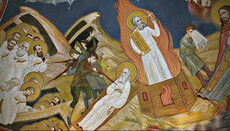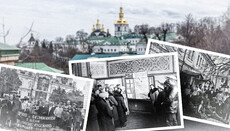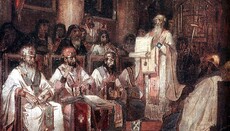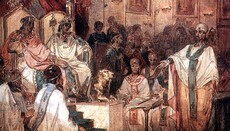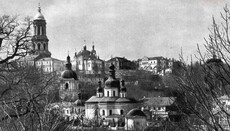The OCU Project and the Union of Brest: What has been is what will be again
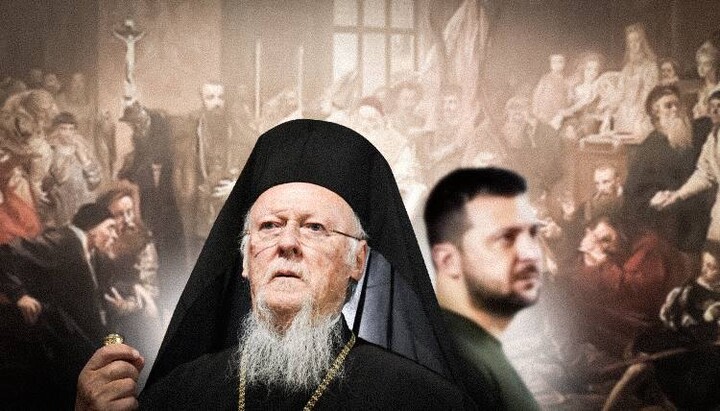
The OCU project – the involvement of the state, motives, and methods strongly resemble the Union of Brest of 1596. Its outcomes might also be similar. What could they be?
In the late 16th century, a significant portion of modern-day Ukraine was part of the Polish-Lithuanian Commonwealth, a state formed by the union of Poland and the Grand Duchy of Lithuania.
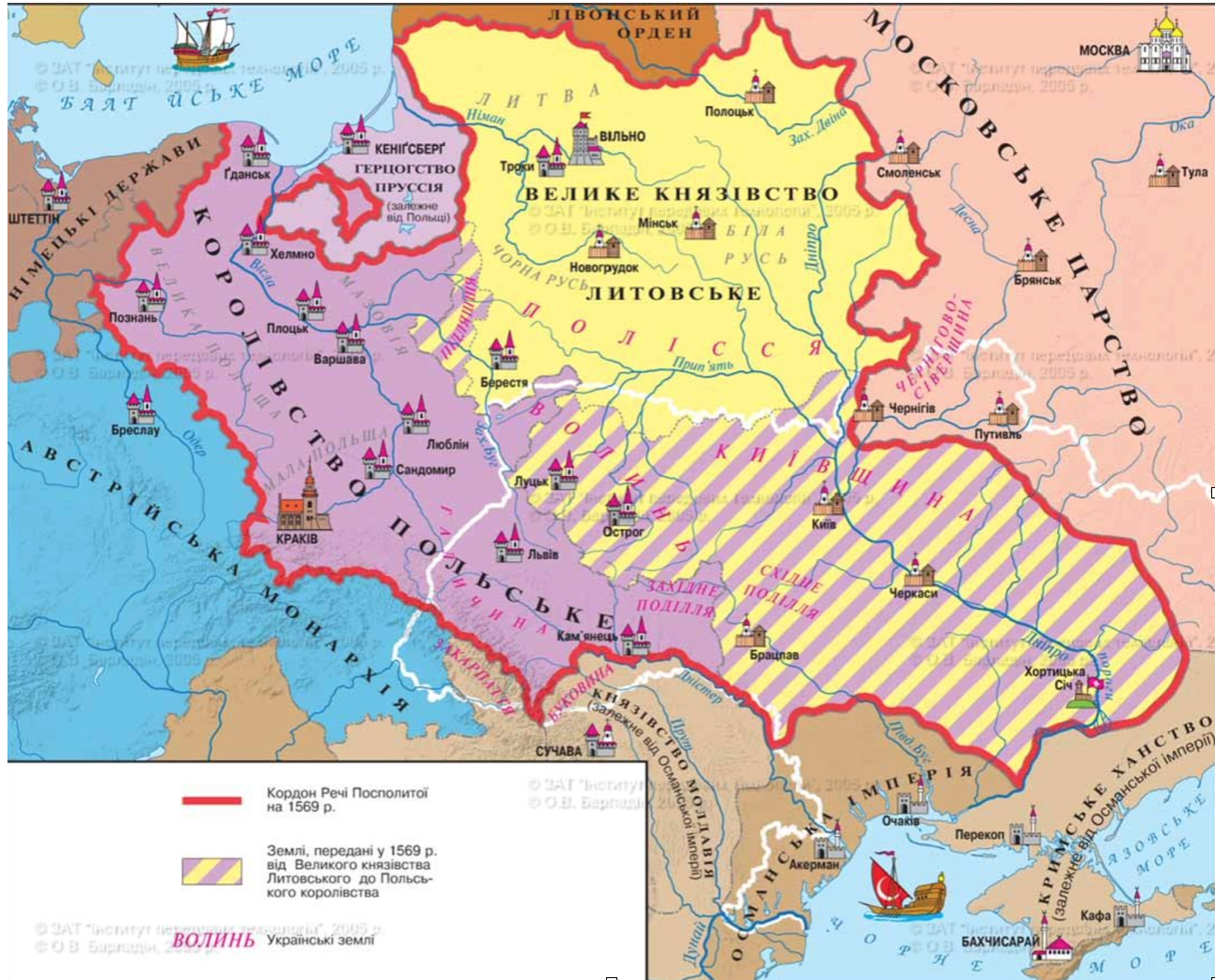
Catholicism was the state religion of the Polish-Lithuanian Commonwealth. Initially, Orthodoxy was a secondary but relatively tolerated religion. However, over time, the attitude toward Orthodox subjects in the Commonwealth began to deteriorate. This situation is well-documented in many Ukrainian history textbooks. Ukrainian peasants were generally not considered full citizens, and the Ukrainian nobility and Orthodox clergy could not compare with their Polish counterparts in status or influence.
It is known that the force of action is equal to the force of reaction. The more you oppress, the stronger the backlash. The Polish authorities sensed growing dissatisfaction among the oppressed Ukrainian people, saw this discontent as a threat, and tried to neutralize it. The idea that simply ceasing the oppression might resolve the issue did not occur to them. The Poles were concerned about the rising power of the Muscovite state and believed that Orthodoxy was the factor linking their Orthodox subjects to Muscovy. Therefore, they sought to sever this connection. The fact that the Moscow Church had already attained the status of a patriarchate and that the Kyiv Metropolis was administratively under the Ecumenical Patriarchate of Constantinople did not matter. Likewise, it does not matter today that the UOC is an entirely independent Church with full autonomy in its governance. The Polish authorities of that time viewed Orthodoxy as an external threat and sought to detach their subjects from the Church and bring them under the authority of the Pope in Rome. Today, the UOC is also seen as a threat, and efforts are being made to bring it under the control of the state and the Ecumenical Patriarch of Constantinople. But aside from the external reasons for the union, there was also an internal one.
This internal premise lay in the fact that some Ukrainian nobles were burdened by their inferior status compared to the Polish nobility and sought to achieve equal rights with them. Some individually converted to Catholicism. However, if a noble converted to Catholicism while all his peasants remained Orthodox, it meant little. It was necessary to convert the peasants to Catholicism as well. This was a much more challenging task, as peasants, unlike most nobles, valued their faith much more deeply. Therefore, to carry out the project of union with Rome, it was first necessary to place individuals in leadership positions within the Church who would obediently follow the will of the Polonized nobility, or better yet, who themselves would strive to submit to the Pope, seeing material benefits for themselves in doing so. These motives were a factor in the appointment of individuals with questionable moral character, infected with ambition and greed, to episcopal sees and the wealthiest parishes, making them obedient to secular authorities. In this respect, today's situation differs from the confrontation between Orthodox and Uniates in the 16th-17th centuries. Today, most UOC hierarchs are appointed to their sees by the decision of the Holy Synod, not by secular authorities. However, this circumstance makes the failure of the OCU project even more likely.
In 1594-1595, Ukrainian hierarchs formed something like a conspiracy, agreeing to union with Rome and drafting certain "articles", i.e., conditions under which the bishops agreed to come under the authority of the Pope. These conditions mainly concerned the material rights, power, and status of the bishops. For example, they desired senatorial titles like those of Catholic bishops, retention of church estates, reduction of the influence of brotherhoods, and so on. A separate point in the "articles" was the preservation of Orthodox dogmas and rites. However, the Uniate project could not remain secret for long. News of attempts to advance the union reached the Orthodox clergy and nobility, among whom the magnate Konstantin Ostrozhsky stood out as one of the most influential and consistent defenders of Orthodoxy. He appealed to the Polish King Sigismund III, requesting a gathering of an Orthodox council where Orthodox Christians could develop a unified position on relations with the Roman Church and the status of Orthodoxy in the Polish-Lithuanian Commonwealth. Sigismund refused the request and urged obedience to the bishops plotting the union.
In 1595, the "articles" were sent to Rome along with a "Conciliar letter to Pope Clement VIII," signed by Metropolitan Michael (Ragoza) of Kyiv and the bishops: Cyril (Terletsky) of Lutsk, Hypatius (Potius) of Volodymyr, Michael (Kopystensky) of Przemyśl, Gedeon (Balaban) of Lviv, Dionysius (Zbyruysky) of Chelm, and Leontius (Pelchitsky) of Pinsk. Konstantin Ostrozhsky appealed to the Orthodox to steadfastly hold to Orthodoxy and not recognize as their archpastors those who supported the union. His appeal was actively supported by Orthodox brotherhoods, a significant portion of the Orthodox nobility, the lower clergy, and laypeople. Under such circumstances, bishops Gedeon (Balaban) and Michael (Kopystensky) preferred to withdraw their signatures from the "articles" and declare their loyalty to Orthodoxy.
In November 1595, Cyril (Terletsky) and Hypatius (Potey) traveled to Rome to meet the Pope, kissed his slipper, and swore allegiance to him. The preservation of Orthodox dogmas was out of the question, as were the other "conditions" of the Ukrainian bishops. They were accepted into Catholicism as "repentant schismatics" without any commitments from Rome. Their only "consolation prize" was the Pope's permission to retain their familiar rites, but only on the condition that they did not contradict Catholic doctrine. Upon their return to Ukraine, they did everything possible to conceal their renunciation of Orthodox teachings. However, this could not be hidden for long. In 1596, the Polish king ordered a council to be convened in Brest to adopt the union. However, the Orthodox fiercely opposed the union. As a result, two councils were effectively held in Brest: one Orthodox and one Uniate. These councils mutually anathematized each other and affirmed: one the loyalty to Orthodoxy, the other the union. The Uniates had the majority of bishops, secular authorities, and the Polonized nobility on their side. On the side of the Orthodox were all the well-known monasteries, many cathedral churches, Orthodox brotherhoods, a part of the nobility, the church community, and two bishops, Gedeon (Balaban) and Michael (Kopystensky). However, since their signatures were already on the documents of the union, the supporters of the Uniate council declared that the entire episcopate, without exception, was for the union.
After the Brest Council, anti-church laws were enacted in the Polish-Lithuanian Commonwealth. Since all the bishops were considered to have joined the union, their congregations, monasteries, and parishes were also declared Uniate. Orthodoxy as such was banned, and those who remained loyal to the Church faced severe persecution. They were deprived of their churches and church property, denied their rights, and often subjected to physical violence. Bishops Gedeon (Balaban) and Michael (Kopystensky) remained Orthodox despite everything and died natural deaths in 1608 and 1612, respectively. After their deaths, the Orthodox were left without any bishops until 1620 when the Patriarch of Jerusalem, Theophanes III, arrived in Kyiv with the support of Hetman Konashevych-Sahaidachny and restored the Orthodox hierarchy.
The Uniate Church was recognized as the only legitimate church in the Polish-Lithuanian Commonwealth, and the state authorities stopped at nothing to force Orthodox parishes and monasteries to join it. The same is happening today. The Ukrainian authorities do not recognize the right of their citizens to be members of the UOC and are doing everything possible to force them to join the OCU. However, they fail to take into account, among other things, the fact that Ukrainians, by their mentality, are a freedom-loving people, and they cannot be forced to change their religious beliefs by a decree from Bankova Street. This was a factor that the Polish authorities in the late 16th century also failed to consider. The Orthodox tried to convince them to change this forced pro-Uniate policy, but persuasion did not help. On the side of the union were the sold-out bishops, a small portion of the clergy, a significant part of the nobility, and the Polish authorities along with the enforcement apparatus at their disposal. But the overwhelming majority of the Orthodox population, the lower clergy, a part of the Ukrainian nobility, and nearly all the monasteries were determined to remain faithful to Orthodoxy. A significant force on the side of the Orthodox was the Cossacks, who provided not only moral but also military support. As a result, instead of solving its internal and external political problems through the union, the Polish-Lithuanian Commonwealth found itself facing a de facto civil war, while also handing the Tsardom of Moscow a key advantage for its aggressive foreign policy.
As mentioned earlier, in 1620, Hetman Petro Sahaidachny facilitated the arrival of Patriarch Theophanes in Ukraine, who consecrated Iov (Boretsky) as the Metropolitan of Kyiv, as well as bishops for other dioceses. In 1633, the Polish government was ultimately forced to recognize the legitimacy of the Orthodox Church and return part of the seized churches and property to it. Of course, the struggle between the Uniates and Orthodox was not over… With varying success and intensity, it continues to this day.
This entire history is rich with various historical events influenced by religious, political, and military factors, but for us, the following undeniable conclusions are important:
1. The union, which was intended to unify the population of the Polish-Lithuanian Commonwealth, instead served as a factor of division. The ill-considered religious policy of the authorities at that time led to a deep rift in Ukrainian society that still exists today.
2. The forced imposition of Uniatism led to armed confrontations between the Polish authorities and the Ukrainian Cossacks. This long and bloody confrontation ultimately ended in victory for Orthodoxy. However, it severely drained the Polish-Lithuanian Commonwealth, which, along with other factors, contributed to the complete dissolution of this state as a result of the so-called "three partitions of Poland."
3. Neither violence, nor the anti-church laws of the time, nor the excesses of the authorities and radical elements compelled the masses of believing people to accept the union. The Church continued to exist and carry out its activities, despite facing immense difficulties.
4. The betrayal of the bishops and their transition to the union had virtually no effect. Their decision was not accepted by the church community and monasticism.
5. The Church underwent a process of internal purification in its struggle against Uniatism, as those seeking profit, honor, and power within the Church departed, ultimately hindering the Church’s development and the fulfillment of its divine mission on earth.
6. The resistance to Uniatism provided a powerful impetus for the development of church theology and other sciences, Ukrainian culture, literacy, printing, and more. The polemics with Catholics and Uniates produced many prominent figures, such as Petro Mohyla, Elisei Pletenytsky, Zachariah Kopystensky, Pamvo Berynda, Lavrentiy Zizaniy, Iov Boretsky, and many others.
Despite the fact that the Uniate Church still exists and is even doing well, the failure of the Uniate project has ultimately been acknowledged even by Pope Francis. Here’s a quote from a declaration he signed in 2016: “Today it is evident that the method of ‘Uniatism’ of previous centuries, which entails bringing one community into unity with another by detaching it from its Church, is not a path to restoring unity.”
Based on all of this, several assumptions can be made about how the religious situation in Ukraine might develop in light of the legislative ban on the Ukrainian Orthodox Church:
Firstly, neither the anti-church law 8371, nor the repressions by the law enforcement agencies, nor the decisions of local authorities, nor the excesses of radicals will be able to force the UOC to self-liquidate and merge into the OCU.
Secondly, the authorities' hopes that they can intimidate some bishops into switching to the OCU will not be realized. If any defectors do appear, they will be few in number and unable to lead their congregations with them. Those who wanted to join the OCU have already done so. The unfortunate experiences of former Metropolitan Alexander Drobinko and especially Simeon Shostatsky illustrate this: neither the believers nor the clergy followed them in significant numbers.
Thirdly, the crude and incompetent incursion of the authorities in church affairs has already led to a split and polarization within Ukrainian society. If continued, such policies threaten to make this confrontation irreparable, which will entail negative consequences for both the social and political situation in Ukraine.
Fourthly, it will not be possible to eliminate the UOC, and ultimately the state will be forced to recognize its right to exist, but this will happen as a result of confrontation, and the toll it will take remains unknown.
However, it is not too late to reconsider everything and try to at least mitigate these potential consequences, if not entirely prevent them.

